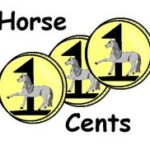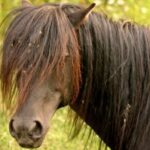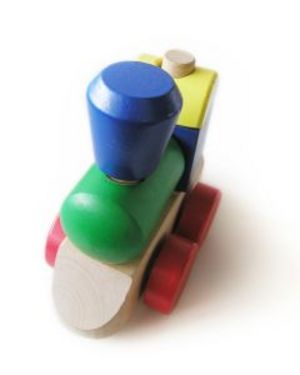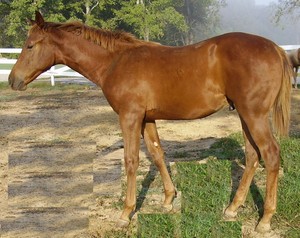Whenever I hear the phrase “hobby-horse,” I think of a child’s toy. My mom used to call those little wooden rocking horses hobby-horses at times. However, I know that in general, they are the toys that are a fake material horse’s head on a stick. My sister and I each used to have one. I remember that I loved playing with it when I was little. I got so irritated with some of the toy industry since it had to make a toy look like a whole horse with a button that made it whinny and neigh. I wondered why this was needed when children have great imaginations and by giving them the stick with the fake horse’s head, an imagination is what is needed.
The meaning of “hobby-horse” that I know was mentioned in 1589 by George Puttenham. This is in his work, The Arte of English Poesie. He wrote, ” King Agesilaus, hauing a great sort of little children… tooke a little hobby-horse of wood and bestrid it to keepe them in play.”
However, I did not know that the phrase hobby-horse had other meanings. It can mean a loose woman or a strumpet. This is found in the 1588 Loves Labours Lost by William Shakespeare. It says, ” Cal’st thou my love Hobbi-horse?” A hobby-horse can also be a dance, a wooden horse on a “merry-go-round” (also called a carousel), or a velocipede, which is sometimes called a dandy horse.
The dance is mentioned around 1668 by Richard Lassels. This is in his work, The Voyage of Italy . He wrote, “Women like those that danced anciently the Hobby-horse in Country Mummings. ” The wooden horse on a carouselis mentioned in the 1741 worked, Gray’s Letters and Poems . He wrote, “A Fair here is not a place where one eats gingerbread or rides upon hobby-horses.
The velocipede or dandy horse is somewhat like a bicycle. However, there are no pedals. The “rider” moved it by alternately moving each foot in front of the other. Essentially, it seems like a bicycle, but there are no pedals. The “rider” walks over the bike frame, but at some points, balance can be obtained to coast for a few inches. It was created by Karl-Freidrich Drais and is considered to be the predecessor to the modern day bicycle. The invention is mentioned in February of 1819 in The Gentleman’s Magazine . It printed, “A machine denominated the Pedestrian Hobby-horse… has been introduced into this country by a tradesman in Long Acre.”
However, what, in general, is a hobby-horse is what now is called a hobby. The original phrase was “hobby-horse” and it has been shortened to “hobby.” The phrase origin is that a breed of horse popular during the Middle Ages in Ireland was known as a hobby-horse. In 1375, John Barbour referred to these horses as “hobynis” in his poem, The Bruce .
In one of Barbour’s works from around 1400, that was reprinted in 1841, he referred to them again. He wrote, “And one amang, an Iyrysch man, / Uppone his hoby swyftly ran.” This gave more detail than the 1375 poem.
Mummers and children often dress in wickerwork costumes of horses to celebrate May Day in Ireland. The tradition started in the 1600s and continues today. Those horse costumes were also called hobby-horses.
It is because of the pastime of caring for horses and the pantomiming of horses in these wickerwork costumes that the the phrase “hobby-horse” came about. Any pastime then became known as a hobby-horse. However, being that not all pastimes involved horses, the phrase was shortened to the word, “hobby.”
Related phrases:
A Bee in One’s Bonnet
The Bee’s Knees
As Busy As a Bee
Sources:
Martin, G. (n.d.). Hobby-horse. The meanings and origins of sayings and phrases . Retrieved April 19, 2012, from http://www.phrases.org.uk/meanings/hobby-horse.html
MilestonesOfScience. (n.d.). The Dandy Horse – YouTube . YouTube – Broadcast Yourself. . Retrieved April 19, 2012, from http://www.youtube.com/watch?v=-DODYTaZARg






